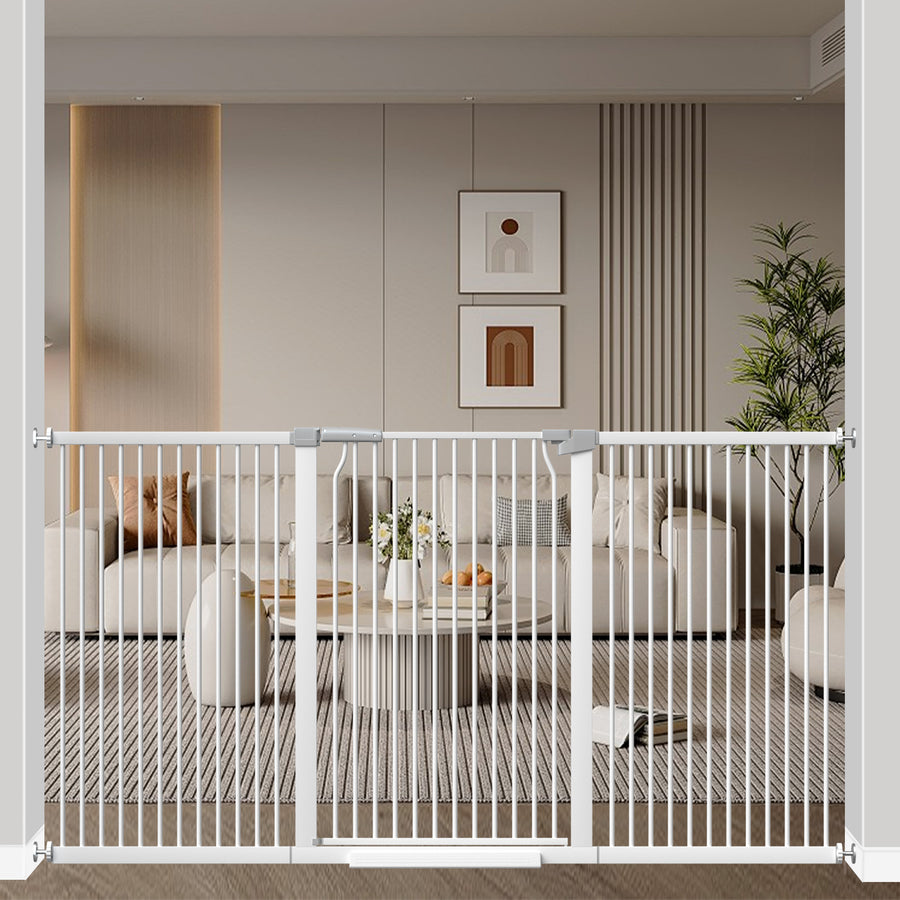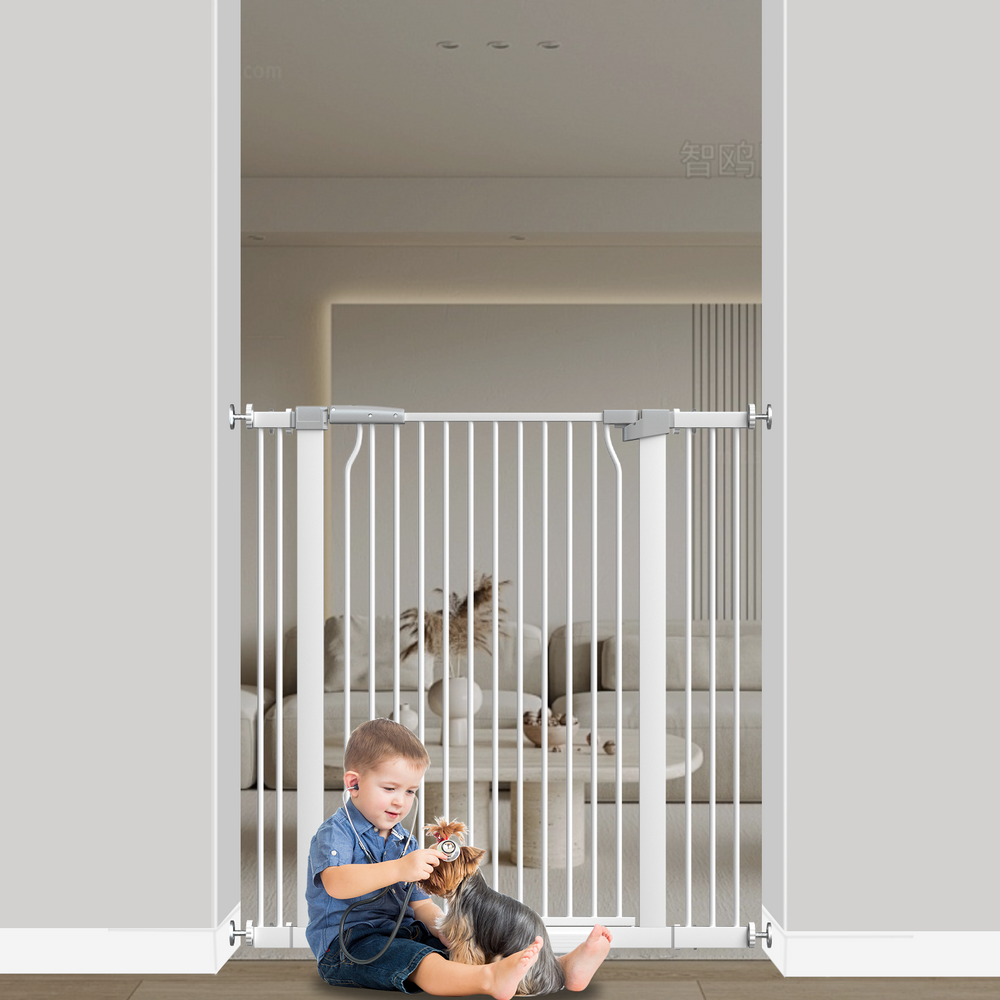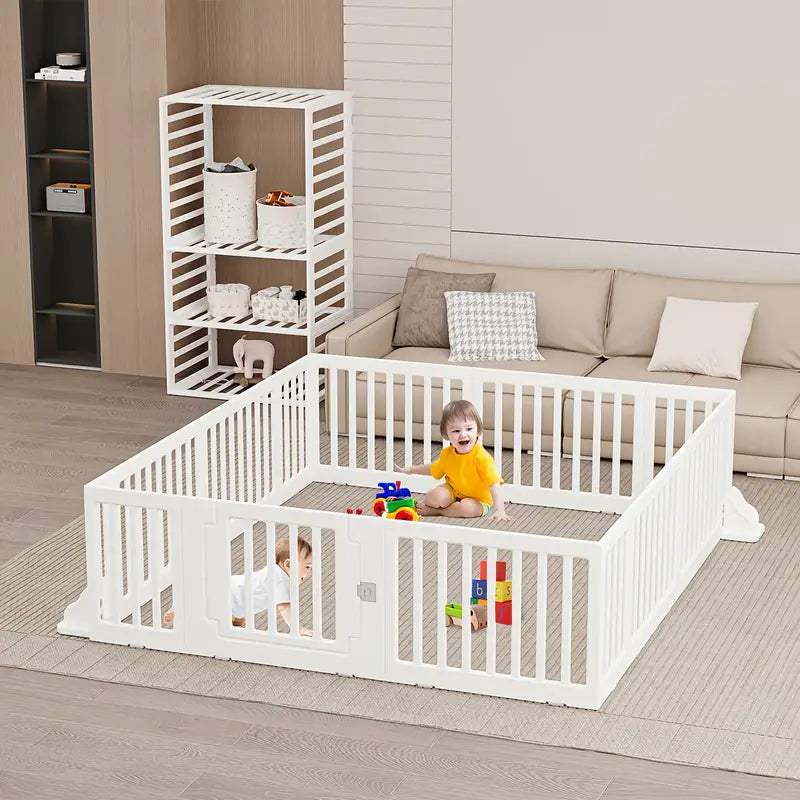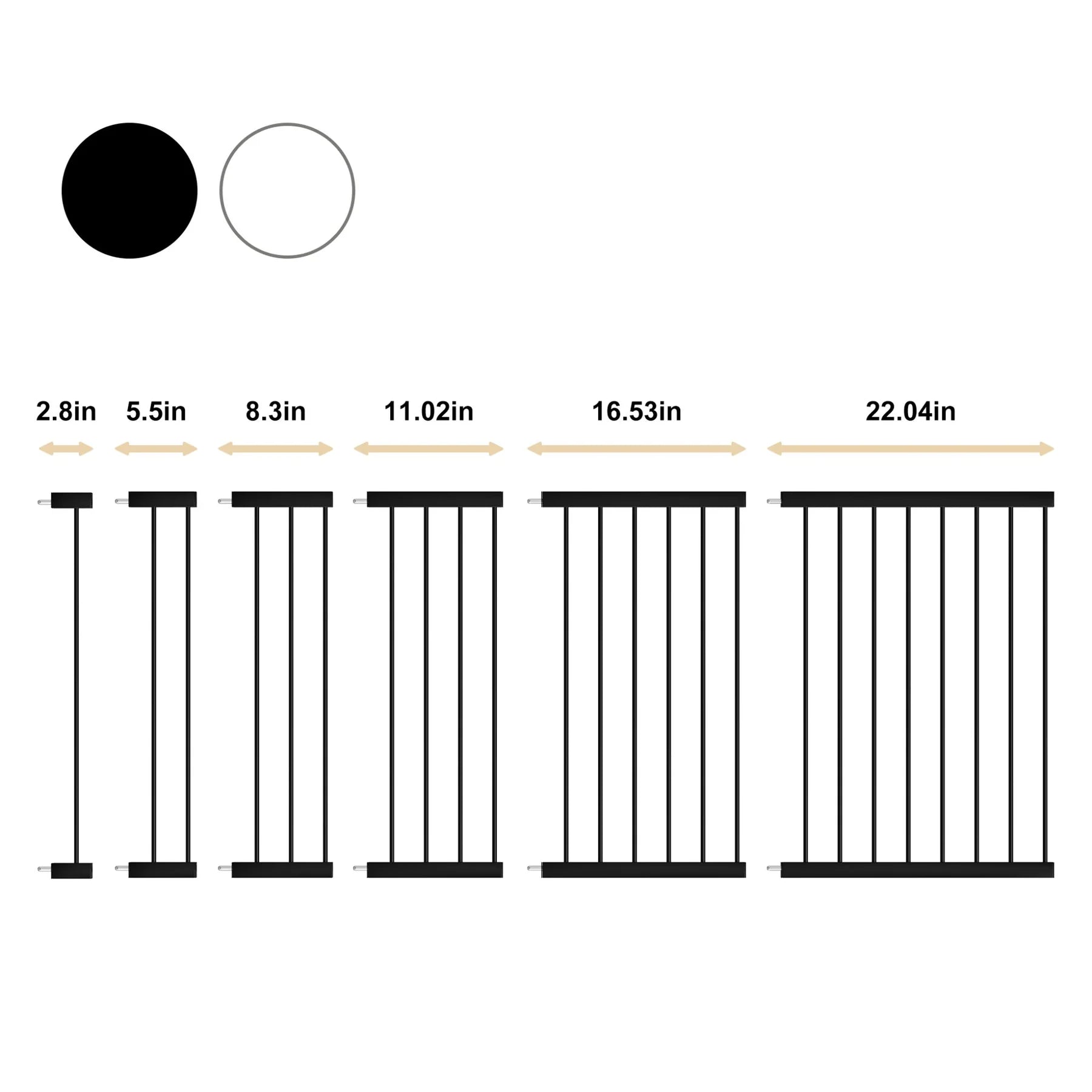Choosing the Right Baby Gate: A Comprehensive Guide
In the world of parenting, ensuring the safety and well-being of your little one is a top priority. As your baby begins to explore the world around them, you'll quickly realize that curious minds and newfound mobility can lead to unexpected adventures—often in places where they shouldn't be.
That's where baby gates come to the rescue, providing a protective barrier that keeps your child away from potential hazards and areas of your home that are off-limits.
This comprehensive guide will dive into the essential aspects of choosing the right baby gate. From understanding the different types of baby gates available to considering factors like space, installation, and safety features, we've got you covered.
By the end of this article, you'll have the knowledge you need to select the perfect baby gate that safeguards your child and seamlessly integrates with your home.
Let's begin the journey to childproofing your space effectively and confidently.
Types of Baby Gates
When choosing the right baby gate, understanding the available types is crucial. Each type has its advantages and is suited to specific situations.
Let's explore these options in detail:
A. Hardware-Mounted Baby Gates
Hardware-mounted gates are secured to the wall or door frame using screws or brackets, providing exceptional stability. They are ideal for areas where safety is paramount, such as staircases.
Hardware-mounted gates are a must for preventing falls down staircases. These gates are suitable for areas where frequent use is expected, as they can withstand repeated opening and closing.
B. Pressure-Mounted Baby Gates
Pressure-mounted gates are held in place by pressure. They do not require drilling or hardware. They are easy to install. It makes them a convenient choice for temporary use or moving the gate around.
Pressure-mounted gates work well in standard doorways and hallways. These gates are best used in areas where the risk of falling isn't significant, such as blocking access to a home office or playroom.
Material and Design
Material and design considerations go hand in hand when selecting the perfect baby gate. It's about safety and ensuring the gate seamlessly fits into your home's aesthetics. Here's what you need to know:
Wood, metal, or plastic gates:
- Wood gates are often visually appealing and can blend well with traditional decor.
- Metal gates are known for their durability and can withstand more wear and tear.
- Plastic gates are lightweight and easy to clean but may not be as sturdy as other options.
Non-toxic finishes and materials:
- Ensure the gate's materials and finishes are non-toxic and safe for your child, especially if they tend to chew on things or have allergies.
Styles and finishes available:
- You can explore a wide range. We are discussing classic to contemporary to find a gate that complements your interior design.
- Consider finishes like white, black, wood tones, or custom colors to coordinate with your home's color scheme.
- Look for gates that look good and function seamlessly within your living space, ensuring they don't disrupt the flow of your home's design.
Height and Width
Determining your baby gate's appropriate height and width is crucial to ensure it serves its purpose effectively. Here's what you need to consider:
Height
- The gate's height should be sufficient to prevent your child from climbing or reaching over the top.
- Standard baby gates are usually around 30 inches tall, but you may need taller gates for particularly adventurous toddlers.
- For staircases, it's essential to have a gate that reaches the recommended height to prevent falls.
Width
- Measure the width of the opening where you plan to install the gate. It's essential to get an accurate measurement to choose the right gate size.
- Many baby gates have extension panels to accommodate wider openings, so check if these are available for your chosen gate.
- Consider customizable gates that allow you to adjust the width to fit various openings in your home.
Safety Features
Regarding your child's safety, we understand that you want the best. That's why we must discuss the safety features you should look for in a baby gate. These features provide extra protection and peace of mind.
Let's delve into what you should consider.
- Slat Spacing:Ensure that the gate you choose has appropriately spaced slats. The gaps should be narrow enough to prevent your child's head from getting stuck.
- Smooth Edges and Corners:Check for any sharp edges or corners on the gate that could pose a hazard. Gates with rounded or padded edges are safer options.
- Gate Swing Direction:Consider the direction in which the gate swings. Some gates are designed to swing in two directions, while others only open one way. Choose the one that suits your needs and space.
- ASTM Safety Standards:Look for gates that meet or exceed ASTM safety standards. This certification ensures that the gate has undergone rigorous testing for safety and durability.
Remember, it's better to be thorough regarding safety features. Your child's well-being is our priority, and these features can make a significant difference in preventing accidents.
Placement and Location
When it comes to where and how you install your baby gate, making the right choices can significantly impact its effectiveness. Let's discuss the best practices for gate placement and location.
Choosing the right locations and ensuring proper gate placement are essential. It's all about creating a safe environment for your child while maintaining the convenience and flow of your daily life.
You'll want to identify the areas in your home that require baby gates. Common locations include:
- Staircase Safety:Placing gates at the top and bottom of staircases is necessary to prevent falls. These areas are high-risk zones, and a gate can provide crucial protection.
- Room-to-Room Barriers:Consider using gates to create barriers to keep your child out of specific rooms or areas. It can include home offices, kitchens, or spaces with potential hazards.
-
Outdoor and Pet-Specific Gates: If you have outdoor spaces that you want to keep your child away from, there are specialized outdoor gates designed for this purpose. Additionally, you may need gates that accommodate child and pet safety if you have pets.

Durability
When it comes to baby gates, durability is key. You want a gate that can withstand the wear and tear of daily life. At the same time, you'll likely want it to last for a while.
Investing in a durable gate means you won't have to worry about replacements or repairs as often. It ensures your child remains safe and your investment pays off in the long run.
Let's discuss what to consider for durability and longevity.
You'll want to evaluate:
- Quality of Materials and Construction:Look for gates made from sturdy materials like metal or high-quality plastic. Well-built gates are less likely to break or wear down quickly.
- Warranty:Check if the gate comes with a warranty. A good warranty can provide peace of mind, knowing you have some protection in case of defects or issues.
Ease of Use and Maintenance
We understand that convenience matters when it comes to baby gates. Selecting a user-friendly and low-maintenance gate can make your daily routine smoother and more efficient while keeping your child safe.
Here, we'll discuss how you can ensure that the gate you choose is easy to use and maintain.
You should consider:
- Gate Operation and Adjustments:Check if the gate is easy to open and close with one hand. Additionally, look for gates that allow for adjustments to fit various openings in your home.
- Cleaning and Maintenance:You need to consider how easy it is to clean the gate. Gates in high-traffic areas can get dirty quickly, so choosing one that's simple to wipe down or detach for cleaning can save you time and effort.
Budget Considerations
Your budget matters when it comes to choosing a baby gate. We understand that you want to invest wisely in your child's safety without breaking the bank. Determine how much you're willing to spend on a baby gate. Setting a budget upfront helps you narrow your options and make a more focused decision.
You should consider the features and quality you're getting for the price. Sometimes, spending more on a durable, feature-rich gate can be a wise investment in the long run. By being mindful of your budget and seeking value for your money, you can find a baby gate that meets your safety needs and aligns with your financial goals.
Conclusion
As we wrap up this guide on choosing the right baby gate, you will comprehensively understand the key factors. Your child's safety and protection are of utmost importance, and the right baby gate can be a crucial tool in providing that safety while maintaining the functionality and aesthetics of your home.
You're not just buying a baby gate but investing in peace of mind. By carefully assessing your needs, budget, and the features that matter most, you can confidently select a baby gate that suits your family's unique requirements.
We hope this guide has been helpful in your quest to childproof your home and create a secure environment for your little one. If you have any questions, please do not hesitate to reach out. Your child's safety is our priority, and we're here to support you every step of the way.






Leave a comment